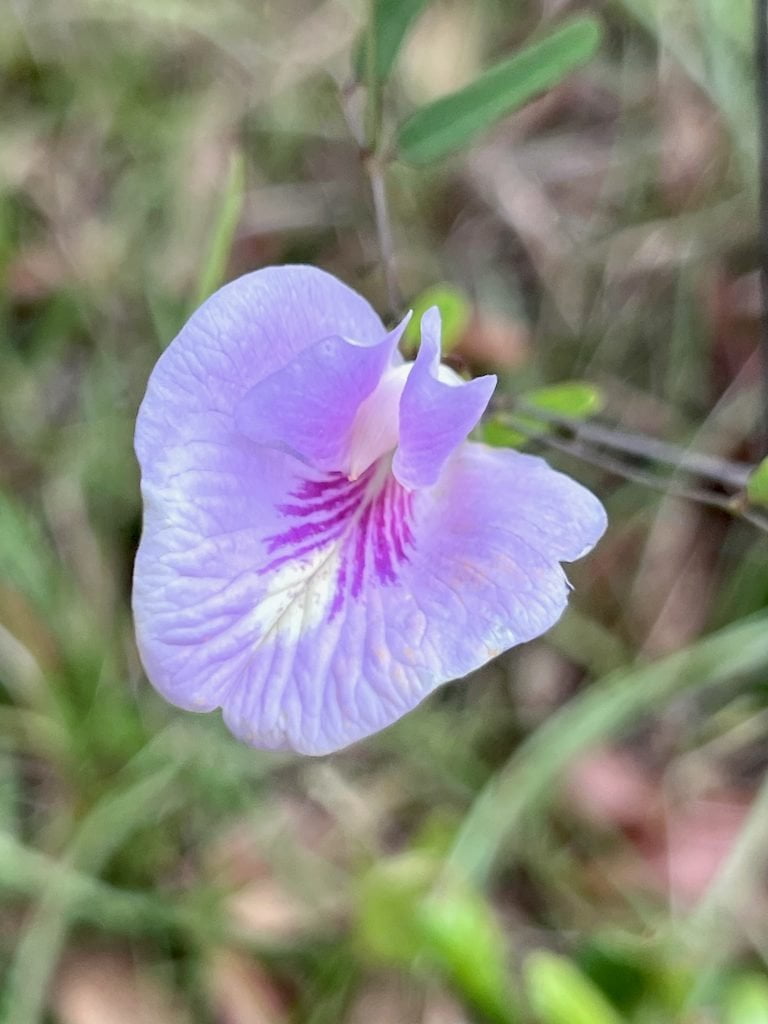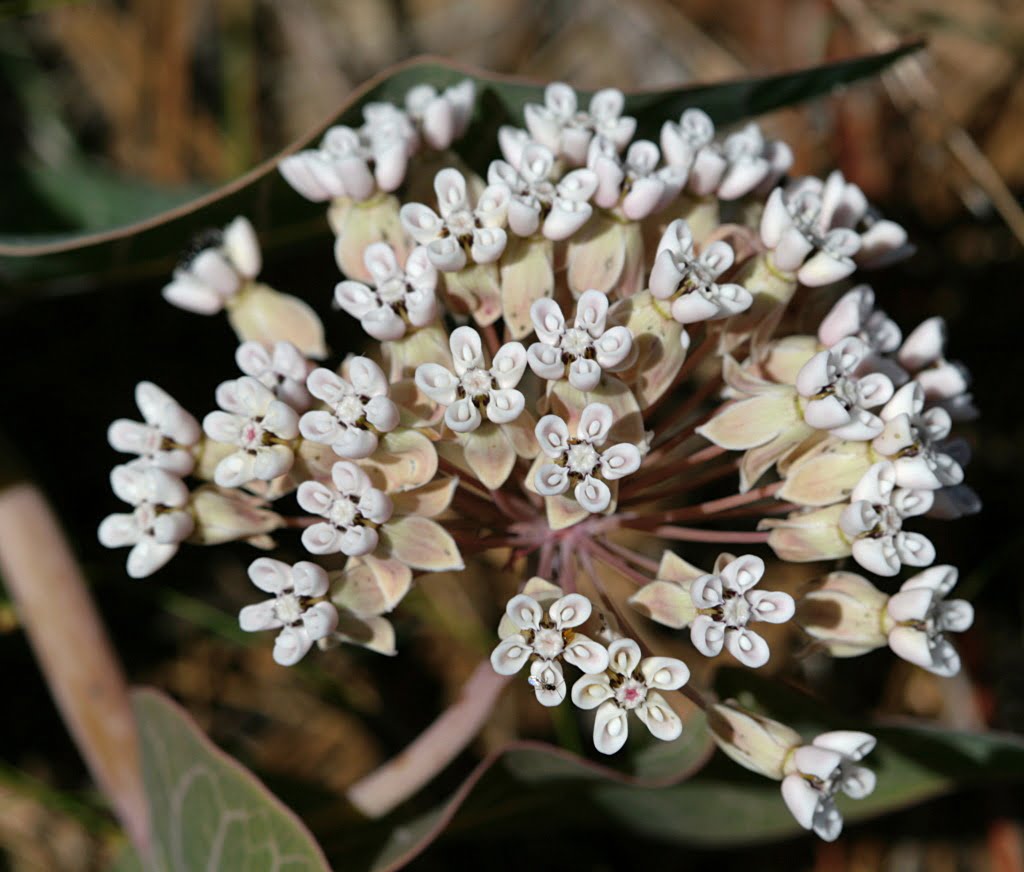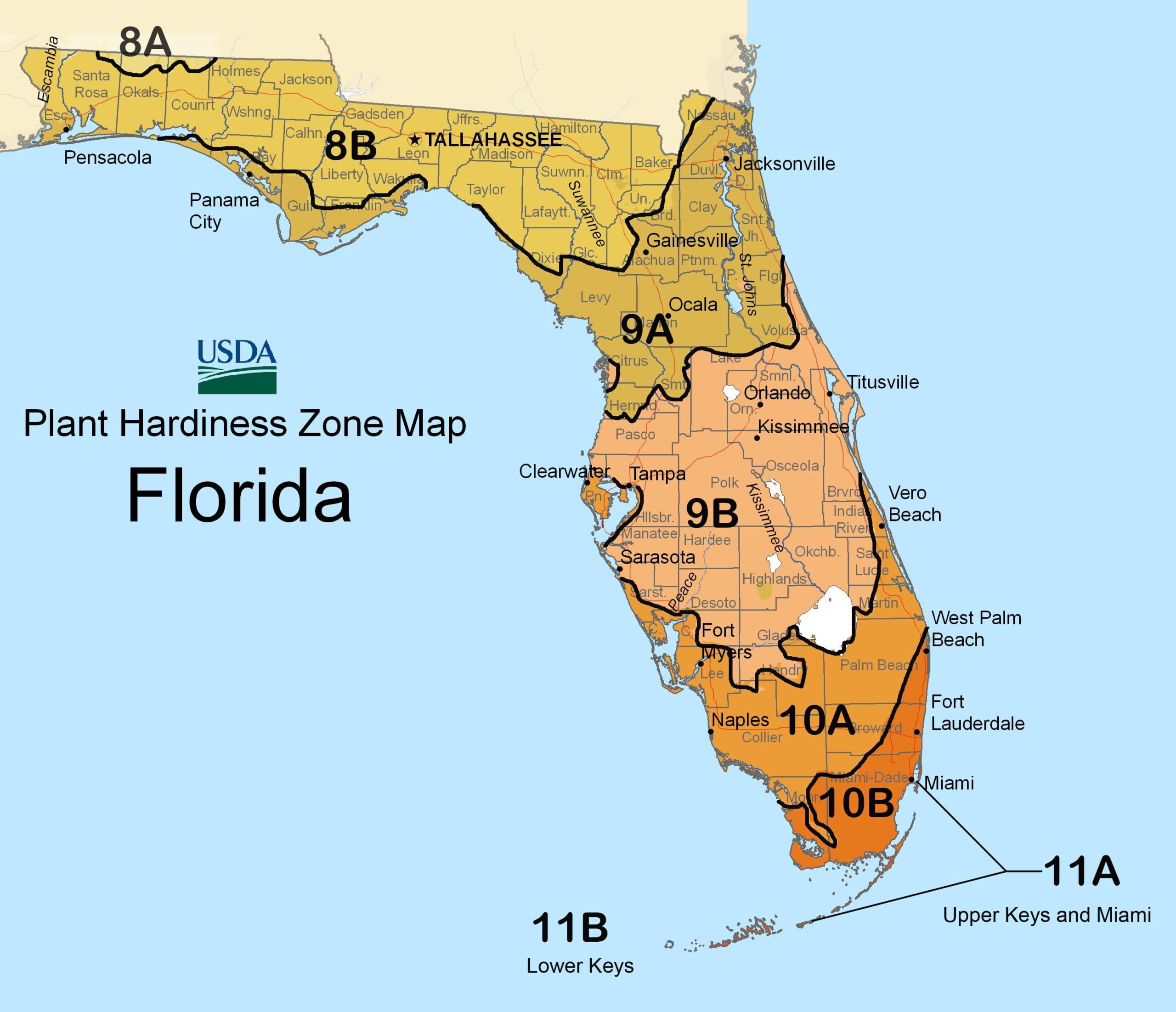The USDA Plant Hardiness Zone Map divides North America into 13 zones, based on average annual minimum winter temperatures. The higher the zone number, the warmer the climate.
In Florida, you’ll find a total of eight subzones: 8a through 11b.
Zone 8a: Covers the extreme northwestern part of the state, with minimum temperatures ranging from 10 to 15°F (-12 to -9°C).
Zone 8b: Includes some parts of northern Florida, and most of the panhandle, with minimum temperatures ranging from 15 to 20°F (-9 to -7°C).
Zone 9a:
Encompasses the north-central region of Florida, including Gainesville and Ocala, with minimum temperatures ranging from 20 to 25°F (-7 to -4°C).-
Zone 9b:
Covers central Florida, including cities like Tampa and Orlando, with minimum temperatures ranging from 25 to 30°F (-4 to -1°C).

2 Sweet-Scented Pigeonwings (Clitoria Fragrans) Seeds – Florida Native – FL ONLY
Clitoria fragrans is a rare species of flowering plant in the legume family known by the common name pigeon wings, or sweet-scented pigeon wings. It is endemic to Central Florida and is listed as federally endangered. If you think you can grow one, then you can help Johnny on his mission to restore endangered species… one day at a time!
Zone 10a:
Includes parts of the coastal regions in both southeastern and southwestern Florida, Naples Fort Meyers, and and with minimum temperatures ranging from 30 to 35°F (-1 to 2°C).-
Zone 10b:
Encompasses areas closer to the coast in southeastern and southwestern Florida, including cities like Miami, with minimum temperatures ranging from 35 to 40°F (2 to 4°C).-
Zone 11a:
This zone includes the warmest parts of mainland Florida, where the minimum temperature rarely drops below 40°F (4°C).-
Zone 11b:
Includes the Florida Keys, with minimum temperatures ranging from 45 to 50°F (7 to 10°C).

10 Sandhill Milkweed Seeds Ascslepias Humistrata Pinewood Milkweed Florida-Native
With Johnny Butterflyseed’s Sandhill Milkweed seeds, you’re not just planting flowers; you’re cultivating a living mosaic of nature’s marvels. 10+ Florida Native seeds.
Keep in mind that microclimates and local geography can lead to variations within these zones, so it’s best to consult a detailed USDA Plant Hardiness Zone Map specific to Florida for precise information about planting in your particular area.
